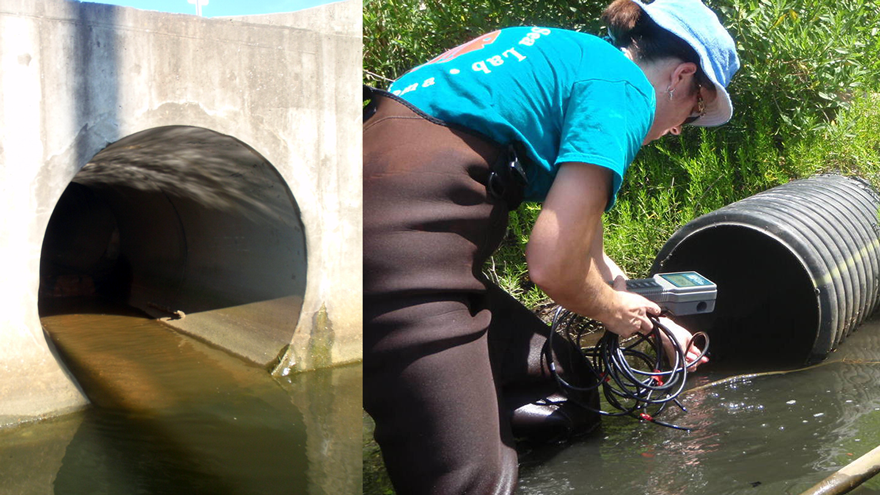Outfall Pipes

An outfall pipe is a location where stormwater or wastewater discharges into a body of water. Outfall pipes are commonly seen along the edge of most rivers, estuaries and even in marshes. Outfall pipes deliver fertilizers, animal waste, road runoff, chemical contaminants and other debris via stormwater, and some homes have unpermitted connections to stormwater drains.
Wastewater treatment facilities and many industries are permitted to discharge wastewater into rivers, streams, estuaries and coastal waters. These permits require stringent testing and documentation that pollutant concentrations are within regulations. Permits are regulated under the Clean Water Act and can be viewed online.
Did you know: Most stormwater drains empty into local streams and rivers that discharge to bays and estuaries without treatment.
- Sewage is typically treated before discharge to reduce potentially harmful microbes but may not be treated to remove nutrients. Sewage treatment can occur at the level of the individual home, neighborhood, or municipality, with some communities served by a combination of treatments.
- Industrial wastewater is often treated to normalize salinity and pH, but may not remove nutrients.
- Combined sewer overflows can occur when systems collect rainwater runoff, sewage, and industrial wastewater in the same system of pipes for transportation to a wastewater treatment plant for treatment and discharge. During periods of high rainfall or snowmelt, the volume of wastewater can exceed the capacity of the treatment facility, resulting in overflow and discharge of some untreated wastewater.
For more information: